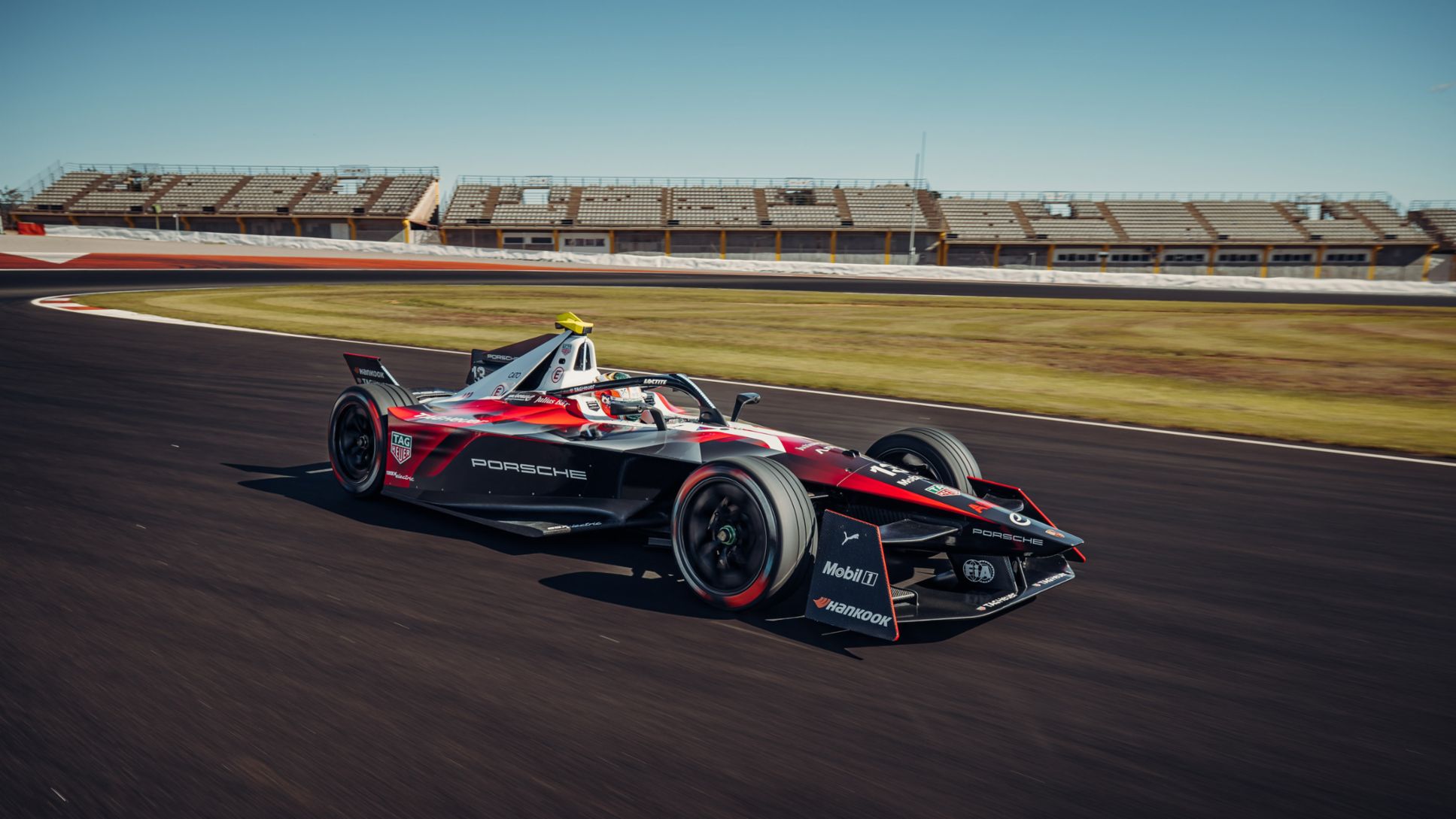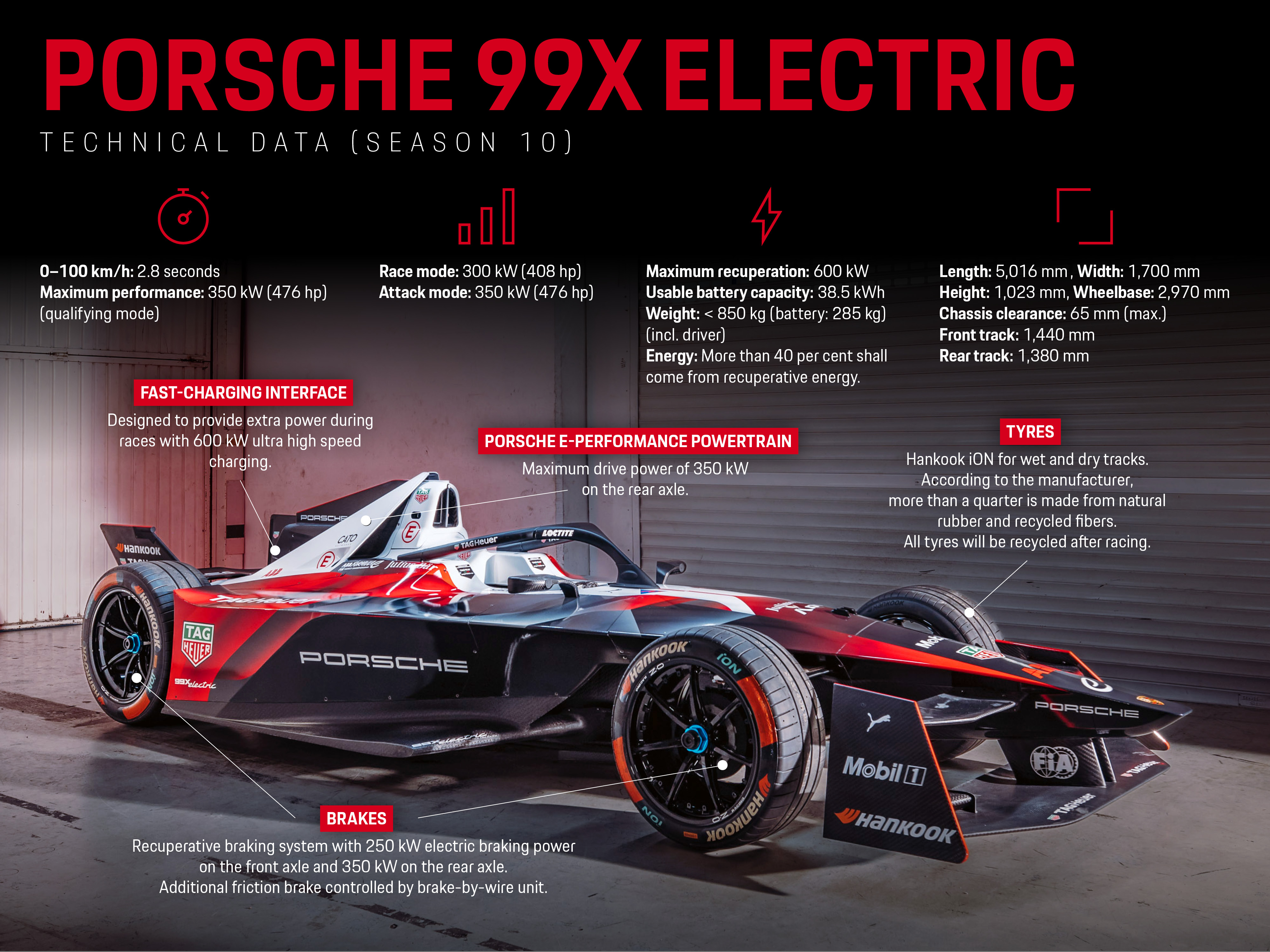The third-generation Formula E cars represent a new technological milestone and will be competing in the all-electric racing series from the 2023 season. The Gen3 racing cars introduce new technical standards such as a significant power increase of 100 kW (136 PS) to a maximum of 350 kW (476 PS) in qualifying mode. The energy recovery can even enable up to 600 kW (816 PS), which is 2.4 times higher than for Gen2. These increased outputs also lead to significantly greater acceleration and maximum speed, which are achieved by means of a new powertrain and revised aerodynamics. The racers are also lighter and more agile than the previous cars.
The Fédération Internationale de l’Automobile (FIA) and Formula E are aiming to launch a racing car that will set new standards in motorsport for performance, efficiency and sustainability. At the end of April 2022, the new Gen3 car was presented to the world in Monaco.
Porsche developed the Gen3 version of the new Porsche 99X Electric at the Porsche Development Centre in Weissach. The new car will be on the starting grid at the ABB FIA Formula E World Championship in 2023.
Porsche 99X Electric Gen3
Sustainability
- Battery: According to component manufacturer data, the third generation of the Formula E cars contains cells that are in part made of sustainably obtained minerals. At the end of each racing season, the battery cells will be reused or recycled. More than 40 per cent of the energy used to drive the cars will be recovered by means of regenerative braking.
- Carbon fibre body: According to manufacturer data, recycled carbon fibre from the previous-generation cars will be used to build the racer. Carbon fibre waste will be recycled for new applications using an aviation industry procedure.
- Tyres: According to the manufacturer, natural rubber and recycled fibres make up more than a quarter of the new Gen3 tyres. Like other components, the tyres will also be recycled after every race.
- CO2: According to Formula E data, the CO2 footprint of the new car was measured from the start of the design phase onwards in order to determine all the measures that could help reduce the racing car’s environmental impact. All unavoidable emissions will be offset as part of Formula E’s obligation to net zero CO2.
- Suppliers: Gen3 suppliers will work together to comply with international ISO standards so that the environmental impact of production can be reduced during the manufacturing process.
Performance
- Speed: The cars of the new generation show potential for significantly higher maximum speeds.
- Energy: More than 40 per cent of the energy used will come from recuperative energy that results from braking.
- Energy efficiency: The output of the new Gen3 cars has increased to 350 kW (476 PS). The energy efficiency of the drivetrain is around 95 per cent compared to approximately 40 per cent for the best combustion engines.
- Powertrain: For the first time, the car has one powertrain at the front and one at the rear – an innovation for electric race cars. The maximum driving power is split between 250 kW of recuperative energy on the front axle and 350 kW on the rear axle.
- Charging capacity: The ultra-high-speed charging capacity of the Gen3 cars will provide 600 kW of additional energy during races. This would make the chargers of the new Formula E cars almost twice as powerful as the current most advanced commercial chargers. The fast-charging technology will also ensure constantly high battery power.
RACING AND DESIGN
The higher performance values are accompanied by a shorter wheelbase, narrower track width and an overall weight reduction of more than 50 kilograms from the previous 903 kg. This improves the overall performance and agility of the cars during races.
The design of the new car was also revised, as can be seen in new aerodynamic elements that manage airflow, or the omission of the wheel covers seen on the previous car. All of this in combination gives the new car a significantly different look.


